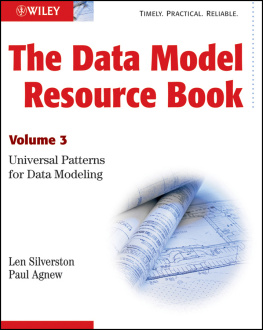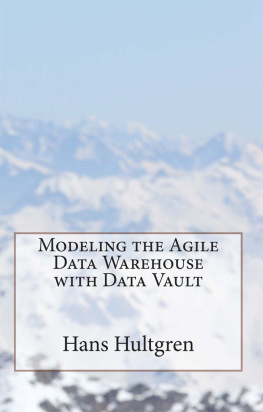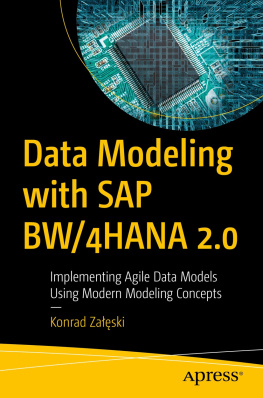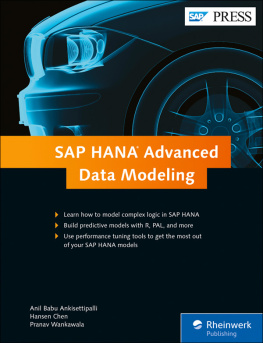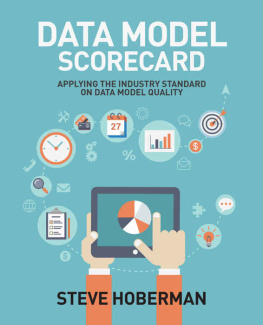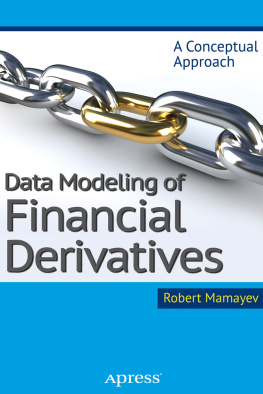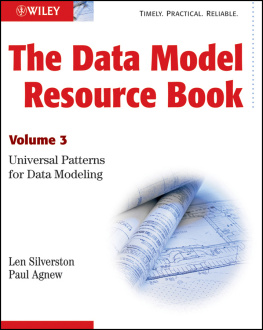The Data Model Resource Book, Volume 3: Universal Patterns for Data Modeling
Published by
Wiley Publishing, Inc.
10475 Crosspoint Boulevard
Indianapolis, IN 46256
www.wiley.com
Copyright 2009 by Len Silverston and Paul Agnew.
Published by Wiley Publishing, Inc., Indianapolis, Indiana
Published simultaneously in Canada
ISBN: 978-0-470-17845-4
No part of this publication may be reproduced, stored in a retrieval system or transmitted in any form or by any means, electronic, mechanical, photocopying, recording, scanning or otherwise, except as permitted under Sections 107 or 108 of the 1976 United States Copyright Act, without either the prior written permission of the Publisher, or authorization through payment of the appropriate per-copy fee to the Copyright Clearance Center, 222 Rosewood Drive, Danvers, MA 01923, (978) 750-8400, fax (978) 646-8600. Requests to the Publisher for permission should be addressed to the Legal Department, Wiley Publishing, Inc., 10475 Crosspoint Blvd., Indianapolis, IN 46256, (317) 572-3447, fax (317) 572-4355, or online at http://www.wiley.com/go/permissions.
Limit of Liability/Disclaimer of Warranty: The publisher and the author make no representations or warranties with respect to the accuracy or completeness of the contents of this work and specifically disclaim all warranties, including without limitation warranties of fitness for a particular purpose. No warranty may be created or extended by sales or promotional materials. The advice and strategies contained herein may not be suitable for every situation. This work is sold with the understanding that the publisher is not engaged in rendering legal, accounting, or other professional services. If professional assistance is required, the services of a competent professional person should be sought. Neither the publisher nor the author shall be liable for damages arising herefrom. The fact that an organization or Website is referred to in this work as a citation and/or a potential source of further information does not mean that the author or the publisher endorses the information the organization or Web site may provide or recommendations it may make. Further, readers should be aware that Internet Web sites listed in this work may have changed or disappeared between when this work was written and when it is read.
Library of Congress Cataloging-in-Publication Data is available from the publisher.
For general information on our other products and services please contact our Customer Care Department within the United States at (800) 762-2974, outside the United States at (317) 572-3993 or fax (317) 572-4002.
Trademarks: Wiley and the Wiley logo are trademarks or registered trademarks of John Wiley & Sons, Inc. and/or its affiliates, in the United States and other countries, and may not be used without written permission. Universal Data Models is a registered trademark of Universal Data Models, LLC. All other trademarks are the property of their respective owners. Wiley Publishing, Inc. is not associated with any product or vendor mentioned in this book.
Wiley also publishes its books in a variety of electronic formats. Some content that appears in print may not be available in electronic books.
To my amazing and loving wife, Annette, and my wonderful daughters, Danielle and Michaela
Len Silverston
To my mother, Breda, and in loving memory of my father, Tom
Paul Agnew
Advance Praise for The Data Model Resource Book, Volume 3
Len and Paul look beneath the superficial issues of data modeling and have produced a work that is a must for every serious designer and manager of an IT project.
Bill Inmon
World-renowned expert, speaker, and author on data warehousing and widely recognized as the father of data warehousing
The Data Model Resource Book, Volume 3: Universal Patterns for Data Modeling is a great source for reusable patterns you can use to save a tremendous amount of time, effort, and cost on any data modeling effort. Len Silverston and Paul Agnew have provided an indispensable reference of very high-quality patterns for the most foundational types of data model structures. This book represents a revolutionary leap in moving the data modeling profession forward.
Ron Powell
Cofounder and Editorial Director of the Business Intelligence Network
After we model a Customer, Product, or Order, there is still more about each of these that remains to be captured, such as roles they play, classifications in which they belong, or states in which they change. The Data Model Resource Book, Volume 3: Universal Patterns for Data Modeling clearly illustrates these common structures. Len Silverston and Paul Agnew have created a valuable addition to our field, allowing us to improve the consistency and quality of our models by leveraging the many common structures within this text.
Steve Hoberman
Best-Selling Author of Data Modeling Made Simple
The large national health insurance company I work at has actively used these data patterns and the (Universal Data Models) UDM, ahead of this book, through Len Silverston's UDM Jump Start engagement. The patterns have found their way into the core of our Enterprise Information Model, our data warehouse designs, and progressively into key business function databases. We are getting to reuse the patterns across projects and are reaping benefits in understanding, flexibility, and time-to-market. Thanks so much.
David Chasteen
Enterprise Information Architect
Reusing proven data modeling design patterns means exactly that. Data models become stable, but remain very flexible to accommodate changes.
We have had the fortune of having Len and Paul share the patterns that are described in this book via our engagements with Universal Data Models, LLC. These data modeling design patterns have helped us to focus on the essential business issues because we have leveraged these reusable building blocks for many of the standard design problems. These design patterns have also helped us to evaluate the quality of data models for their intended purpose. Many times there are a lot of enhancements required. Too often the very specialized business-oriented data model is also implemented physically. This may have significant drawbacks to flexibility. I'm looking forward to increasing the data modeling design pattern competence within Nokia with the help of this book.
Teemu Mattelmaki
Chief Information Architect, Nokia
Once again, Len Silverston, this time together with Paul Agnew, has made a valuable contribution to the body of knowledge about data models, and the act of building sound data models. As a professional data modeler, and teacher of data modeling for almost three decades, I have always been aware that I had developed some familiar mental patterns which I acquired very early in my data modeling experience. When teaching data modeling, we use relatively simple workshops, but they are carefully designed so the students will see and acquire a lot of these basic patternstemplates that they will recog- nize and can use to interpret different subject matter into data model form quickly and easily. I've always used these patterns in the course of facilitating data modeling sessions; I was able to recognize Ah, this is just like , and quickly apply a pattern that I'd seen before. But, in all this time, I've never sat down and clearly categorized and documented what each of these patterns actually was in such a way that they could be easily and clearly communicated to others; Len and Paul have done exactly that . As in the other Data Model Resource Book s, the thinking and writing is extraordinarily clear and understandable. I personally would have been very proud to have authored this book, and I sincerely applaud Len and Paul for another great contribution to the art and science of data modeling. It will be of great value to any data modeler.

